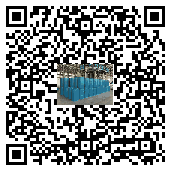Applications of Water-Based Non-Ionic Penetrants
Due to their excellent penetrating properties and environmental friendliness, water-based non-ionic penetrants
have been widely used in various industries, playing a key role in many aspects of production and daily life.
Specific application scenarios are as follows:
I. Textile Industry
Fabric Pre-treatment: During the cleaning and desizing processes of new fabrics, water-based non-ionic penetrants
can be added. They help the cleaning solution quickly penetrate the gaps between fabric fibers, effectively removing
surface oils (such as lubricant residue from weaving) and sizing agents (such as starch and chemical pulp used to
stabilize yarns), clearing obstacles for subsequent processing and improving fabric cleanliness.
Fabric Dyeing: When dyeing natural fibers like cotton and linen, these penetrants open fiber channels, helping the
dye penetrate evenly into the fibers, avoiding the problem of uneven dyeing. This ensures uniform, vibrant colors
on textiles like cotton T-shirts and jeans, while also enhancing dye adhesion and reducing fading.
II. Agriculture
Pesticide Application:
Spraying a water-based nonionic penetrant mixed with pesticide allows the pesticide solution to quickly spread across
the surface of crop leaves, forming a uniform film and preventing the pesticide from shrinking into droplets and rolling
off, resulting in waste. It also helps the pesticide penetrate deep into the leaves and even down the stems to the roots,
effectively killing pests on the underside of leaves and root pathogens. This reduces pesticide use by 10%-20%,
lowering agricultural costs and reducing environmental pollutant emissions.
Seed Pretreatment: Before sowing, soaking rice, vegetable, and other crop seeds in a nutrient solution containing
this penetrant accelerates nutrient penetration, improving germination rates and initial growth vigor.
III. Paint and Building Materials Industry
Wall Paint Application:
Before painting rough walls, adding a water-based nonionic penetrant to the paint promotes paint penetration into
the wall's micropores, enhancing adhesion and preventing peeling and cracking due to poor paint adhesion. It's
particularly suitable for wall coatings in humid environments like bathrooms and kitchens, and can also improve
wall waterproofing.
Wood Treatment: Adding this penetrant to wood moisture-proofing agents and preservatives helps the agents
penetrate deep into the wood, forming a protective barrier between wood fibers. This effectively reduces
moisture-induced mold and deformation, extending the lifespan of wood products like outdoor fencing
and home wood floors.
IV. Cleaning Industry
Industrial Cleaning:
For stubborn oil stains on factory machine parts (such as automotive engine parts and mechanical gears), adding
a water-based non-ionic penetrant to the cleaning agent helps the cleaner quickly penetrate the oil layer and
crevices between parts, effectively breaking down and removing the oil, improving cleaning efficiency and
cleanliness.
Home Cleaning:
Some strong-strength laundry detergents and kitchen range hood cleaners contain a small amount of this
penetrant to help the cleaner penetrate stubborn stains like motor oil on clothing and heavy oil stains from
range hoods, enhancing cleaning effectiveness and making household cleaning easier.
V. Other Industries
Paper Industry:
During the pulping process of paper production, the addition of a water-based nonionic penetrant promotes
chemical penetration into the pulp fibers, improving deinking efficiency and bleaching uniformity, thereby
improving paper quality and resulting in a whiter, more uniform texture.
Leather Industry: During the tanning and dyeing processes of leather processing, this penetrant helps tanning
liquids and dyes quickly penetrate the leather, resulting in more complete tanning and more uniform dyeing.
This improves the softness and appearance of leather products, while reducing color variations, hardness,
and brittleness.


